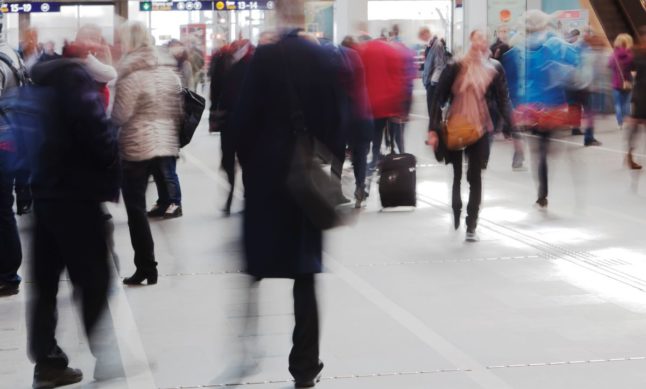There are around 10,700 American citizens living in Norway, according to official figures from the national data agency Statistics Norway (SSB).
These figures include American citizens born abroad and the children of two foreign-born parents born in Norway with citizenship. The reason why the children of foreign residents are included in immigration statistics is that not all children born in Norway are automatically granted Norwegian citizenship.
Last year, the most common residence card granted to US nationals was for a family immigration permit (516). In contrast, similar numbers of Americans (437 & 436) were given permits to work or for educational purposes.
READ ALSO: Why do people move to Norway, and where do they come from?
However, these figures are only for those granted a permit in 2022 and don’t include those who didn’t apply for or renew a permit throughout 2022. But based on these numbers, Americans appear to move to Norway for education, work, or to be with family or a partner in similar numbers.
Around a third of the more than 10,000 Americans in Norway are based in Norway’s two biggest cities, Oslo and Bergen.
In 2022, 2,722 Americans lived in Oslo, while 761 US nationals called Bergen home. Of the country’s largest cities, Stavanger and Trondheim were also popular. Some 641 US nationals were registered as living in Stavanger, while official figures showed around 561 Americans living in Norway.
When including nearby Sandnes (176) and Sola (161) as part of the wider Stavanger area, the city on the west coast then leapfrogs Bergen as the second most popular part of Norway with American citizens. The nearby oil trade makes Stavanger a popular destination with international workers in Norway.
Comparatively, few Americans chose to make two of Norway’s other cities, Ålesund and Kristiansand, home. Around 265 Americans were living in Kristiansand in 2022, while just 74 called Ålesund home. Meanwhile, there were 187 US nationals in the unofficial Arctic capital of Tromsø. Another city north of the Arctic circle, Bodø, had just 66 nationals from the states living there.
There were also large numbers of Americans living in the towns and cities near Oslo. For example, Bærum (461) and Asker (307) had Norway’s 5th and 6th largest communities of US nationals. Other towns near Oslo with a considerable number of American citizens were Drammen (133), Lillestrøm (124), Nodre Follo (108), Moss (91) and Kongsberg (73).
Fredrikstad (120), Sanjefjord (118), and Ås (100) were the only other towns and cities in Norway with more than 100 American inhabitants. After that, Norway’s American population began to be spread more sporadically.
Statistics Norway’s figures also show there are a few dozen municipalities in Norway without a single American inhabitant. In addition, there were a similar number of municipalities in Norway with just 3 or 4 American residents.
READ MORE: What are the most common reasons Americans in Norway contact the U.S. embassy?



 Please whitelist us to continue reading.
Please whitelist us to continue reading.
Member comments